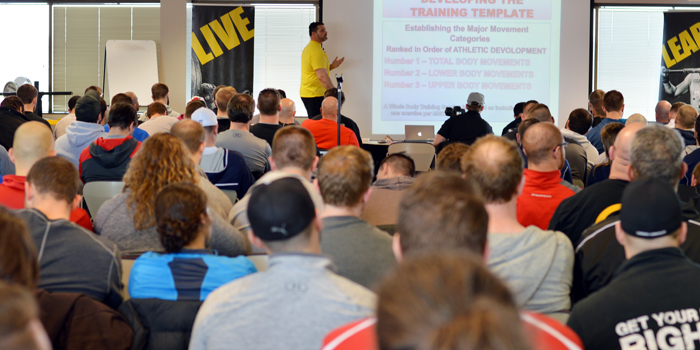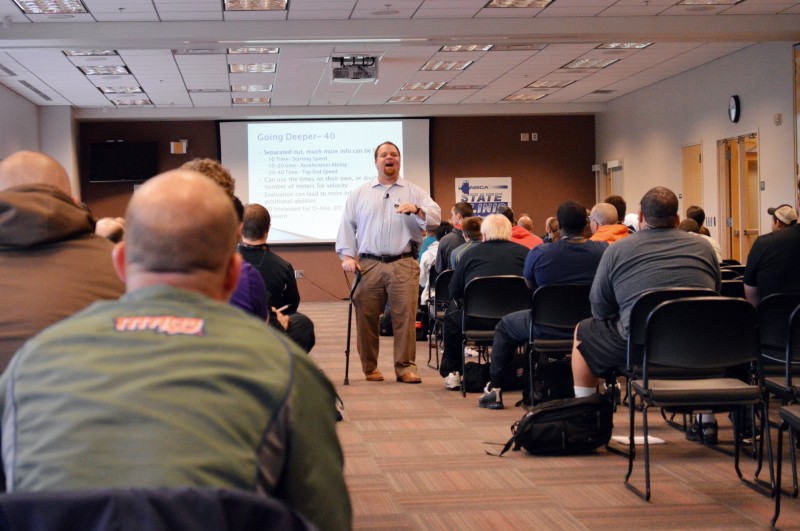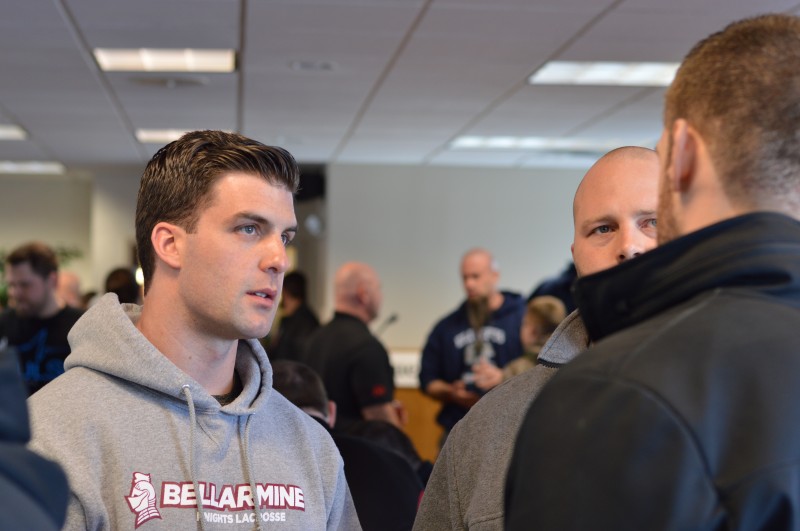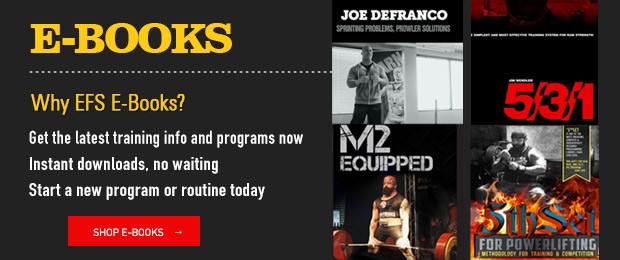
I will be the first to admit I am not the smartest person in any room that I have stepped. In saying this, I often find myself having to constantly read, study, and research in order to better what I do for my athletes. Even then, I run into the problem of having to dissect long sentences or big incomprehensible words (I’m kidding). In order for me to grow, I need to experience new things that I either mold into a new part of my training or take a few bits out of before spitting them out. I believe that in any experience, there are positives to be found if you know where to look.
The foundation of everything I believe in as a coach is power production and rate of force development. How I accomplish those two tasks (creating a ton of force as fast as possible) aren’t as important to me as is the quality of work done during the accomplishment of these two tasks. Now, this isn’t an article about the science of programing (read the first sentence) and if anyone would like to know why I do what I do, I’m happy to talk shop anytime. I’m constantly learning and won’t ever be the guy who proclaims himself the guru of anything. My most efficient way of learning is by trying new things and eventually integrating them. I wish I could say I come up with new, innovative ways of thinking but I simply was not blessed with this trait. This realization has led me to my belief of there’s three types of people in the world of strength and conditioning: the innovator, imitator and integrator.
The Innovator
As stated earlier, I tried my hardest to be an innovator when I was younger. It was around this time that I had stumbled upon bands and position specific training. I thought no one had ever heard of position specific training and that I would revolutionize the field. Alas, I was extremely late to the party on that one. I also thought that plyometrics were a new invention that no one really utilized the way I would. I quickly realized in our field there’s not too many (if any) truly innovative ideas out there and that anything I thought I was creating had already been done about 50 years before me.
RECENT: Practice What You Preach — A Behavior Guide for Young Strength Coaches
Now, there are innovative forces in our field which is a fact I cannot ignore. Coach Bryan Mann, Louie Simmons, and Cal Dietz (a few others I know I’m forgetting) I hold as pioneers in the industry. I believe they have created some truly innovative training methods that have shaped our industry. The only problem is that there are only about 10 of these true innovators and hordes of “false prophets” that believe everything they do is the newest, hottest thing out there.
These are the people who are constantly raving about their new training method online instead of praising the work their athletes do. These are the ones who truly believe they are doing something the Russians, Germans or Bulgarians hadn’t done in the early 50’s to late 70’s. If you walked into their weight room it would probably look more like the Ivan Drago montage in the Rocky IV than an actual college training session. I cannot claim to be the end-all, be-all of strength and conditioning but I do know that basics and quality trump bad training and quantity every single day of the week. I also know ego needs to be left at the doorstep.
Sure, it’s great to think you’re doing something new and innovative but what’s the end goal? Are you trying to get your name in the Journal of Strength and Conditioning or is your main focus on getting your athletes better? Doing a set of band resisted single leg Bulgarian speed squats to an APRE 6 program may get you some likes on Facebook but is it really the “innovation” your athletes need? Realize that there’s nothing new out there and that your 99.9% of the athletes you come across just need to increase their strength, mobility, and flexibility. As the great Coach Todd Stroud once told me, “You push, you pull, and you squat. It’s been the same way for 30 years, bro. We’re not reinventing the wheel.”
The Imitator
Remember back in high school the one girl who didn’t have a personality of her own so she copied the style, look, and personality of whatever guy she dated? This is the imitator. They have no real beliefs of their own so they are constantly trying to adapt to “what’s hip” or the “hottest” thing on the market. I’ve never really found myself on the bandwagon with new wave methods, mainly because I don’t know about anything new until about six years after it’s already happened (I don’t go outside much).
We have been told since childhood not to be followers yet there are still plenty of coaches out there who are ready to jump off a bridge just because Billy did it and Billy is the cool kid so he must be doing something right. If you can’t describe why something is in your program then you shouldn’t be doing it. And not why someone else does it, but why exactly you need to be doing it with your athletes specifically. FMS type screenings are awesome and I think functional movement type exercises are awesome for the people who know how to do them and what they’re looking at. Though I see the usefulness I think I can correct a lot of problems by correcting squat form and squatting deeper than a quarter squat. I don’t know the FMS techniques well enough to go and jump on them so in the future I will conduct more research on the subject but right now I will stick to what I feel is the most effective for my athletes.
And again that’s not to say anyone doing “corrective exercises” is wrong. If anything, I would be wrong for diving into anything I don’t have a full grasp of, which is my entire point. Don’t dive into murky waters unless you know for sure there’s nothing at the bottom of that lake that’s going to hurt or hinder your athletes’ progress. I refuse to jump off the bridge just because “the cool kids” are doing it.
The Integrator
I am a huge reader. I often have to take a break from reading strength and conditioning books because the abundance of knowledge overwhelms, fascinates, and enrages me all at the same time. I’ll read a book and think, “why haven’t I thought about this? I should do this, but I’m too dumb to figure out how." It’s a vicious circle. So by default I find myself slowly integrating new information that I like into my own training, trying them out, and seeing how they feel. If I deem them useful I may or may not integrate them into my athletes programming (if it passes all the tests). A lot of people probably can do this a lot easier and quicker than me but still there has to be some sort of process before you take something new and throw it at your athletes. I will see a new speed drill and think, “wow this is amazing” but it has to fit my mold and what I do. If it’s awesome but way over my head or doesn’t fit into what I do then I won’t do it. I recently found an amazing drill that I loved, fit into my model, made sense, and fit into what I wanted to in the next phase of my progressions. So I tried it out with my more advanced team and they loved it and it looked great. Because of that, now I will eventually phase it into my athlete's training. Even if it made sense, but hadn’t looked good I wouldn’t have done it again. Sometimes you get caught up so much in wanting something to work that you see what you want to see. You have to be objective with yourself.
RELATED: Are You Consuming, Producing or Engaging?
That’s how I’ve gotten to the point I’m at now with my programming. I’ve learned from some very good coaches before me not to be an imitator and I am not too egotistical to admit that I am not an innovator in this field. One day I hope I stumble onto something that can change the way we do things in the field but I haven’t reached that point yet in my career. I’m just a young guy trying to do the best I can with what I have while continuing my learning. While I’ve been at American Univeristy, my boss Coach Sean Foster and my co-worker Coach Mario Pilato have taught me a lifetime's worth of knowledge about Olympics lifts, programming, and much more. The other day we talked for about two hours and I was blown away by the information I didn’t know that I didn’t know. Does that mean I’m going to change my entire style of lifting to tailor make myself after them? Of course not. I’m going to take what I learn, see what fits my style, see what I can do better and integrate the things that I find are most beneficial. Even if I took their program, I couldn’t run it as efficiently as them because I am not them. I will take what I’ve learned, constantly ask for guidance, and eventually phase some of their methods into my own style.
In Closing
The main takeaway that I hope comes from reading this article is that it’s okay to make mistakes and learn along the way. For example, I’ve found some of the Olympic lifts are very effective but if you don’t know what you’re doing or the right progressions, take the time to try them out yourself and learn from someone who has done a good job coaching Olympic lifts before you go mad scientist and throw them into your program just because. Keep things super simple and get really good at programming the basics. As you grow you will learn more and see/try different things. Even the smartest men had the most god awful programs at some point in their career but they changed them along the way.
And before you try anything, test it out on yourself. Get to see how it feels. Like I stated earlier, I’ve tried a six week block of the Olympic lifts and now I’m the only person in my weight room bench pressing out of a squat jack but at least I can say I tried them and learned them. I saw their usefulness and I saw some things I liked about them and didn’t like. Which is okay. Again, you’re going to meet some really good coaches who are really good at selling their program (they better be — it’s their livelihood) but that doesn’t mean you need to drop everything and make theirs yours. As always, keep grinding and improving your athletes lives.
Donald Day is currently an assistant strength and conditioning coach at American University. Prior to American, Don had a brief stint at Robert Morris University as well as serving as a graduate assistant with the University of Akron's football strength staff. At American, Don oversees the strength and conditioning program for mens's/women's track as well as the implementation of the speed and agility program for various sports.











